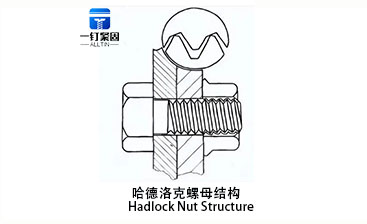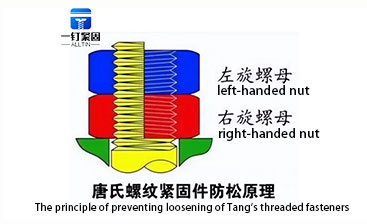Hotline: 4008816860
Hotline: 4008816860
“No one can make the second Hadlock nut, "Japanese Hadlock Company once said to death, but with the development and progress of China's screw industry, the authority of this statement no longer exists.
The principle of Japanese Hadlock nuts and screws is actually very simple. It uses two different shaped nuts, one concave and the other convex, to generate tremendous force on the bolt bearing through the wedge effect, so that the screw is firmly fixed and will not loosen due to factors such as vibration, impact, and temperature changes. It is widely used in important infrastructure and engineering such as bridges, railways, iron towers, wind turbines, ocean drilling machines, and space shuttle launchers, ensuring safety and stability.
Therefore, this type of screw once had a monopoly position in the global market. It is said that even countries with leading technological levels such as the United States and Germany can only order these small screws from Japan's Hadlock Company. And Hadlock Company is also very confident, even disclosing the design drawings and principles of this screw on its official website, and provocatively saying, "You can't make it even if you give me the drawings”

Hadlock Company has a history of nearly 50 years since its establishment, and has spent over 40 years developing and improving this type of screw. For screws of different sizes and materials, there are different corresponding eccentricity, which is a key parameter affecting the anti loosening performance. And these parameters are not easily calculated, but need to be determined through a large amount of experiments and experience. It has also established a dedicated research and development center to continuously develop and test new products, and even a dedicated laboratory to simulate the impact of various extreme environments on screws.
China has the world's largest, most advanced technology, and safest high-speed railway system, making it highly dependent on Japan's "never loosen" screws in the past. It is reported that there are nearly a million screws used on China's high-speed rail, of which more than half are Hadlock screws. This dependence on Japanese screws has brought some adverse consequences to China's high-speed rail. Firstly, the price of Hadlock screws is very expensive, with each screw being about dozens of times that of a regular screw, which adds a significant cost burden to China's high-speed rail system. Secondly, Hadlock Company has strict control over the supply of its screws, and can only provide a certain number of screws to China every year, which has brought certain difficulties to the construction and maintenance of China's high-speed rail. Finally, Hadlock Company has strong technical protection for its screws and is unwilling to engage in technical cooperation or transfer with China.
To get rid of its dependence on Hadlock screws, China must independently develop better and more suitable locking nuts for its own needs. However, this is not an easy task. To manufacture high-quality lock nuts, not only precision machining equipment and processes are required, but also a large amount of experiments and data accumulation are required to determine the optimal small hole position, size, and tightening force required for nuts of different sizes and materials. This requires a significant investment of manpower, material resources, and financial resources, as well as patient long-term exploration and experimentation. However, this cannot challenge Chinese researchers. In fact, we have made some breakthroughs and progress in the independent research and development of lock nuts, among which the most representative is the Tang thread.
Tang's thread is a new type of anti loosening thread system that was successfully developed and patented by Professor Tang Zongcai's team in 2003 after years of research and experimentation. Its principle is to add a small eccentricity on top of ordinary threads, creating a centripetal force between the screw and nut, thereby achieving a self-locking effect. This effect is not affected by external factors such as temperature, humidity, vibration, etc., and can ensure the fastening performance between screws and nuts.

The advantage of Tang's thread is that it does not require additional components or tools, and can be tightened or disassembled with a regular wrench or electric wrench, making the operation simple and convenient. At the same time, it will not cause damage or deformation to screws and nuts, and can be reused with a long service life. More importantly, its cost is much lower than that of Hadlock screws, with each screw costing only a few yuan, rather than tens or even hundreds of yuan. At present, Tang's threads have been tested on some high-speed railway lines. It is reported that its anti loosening performance has reached 99.9%, far higher than the international standard of 95%. Moreover, there were no malfunctions or problems during use, and it has received unanimous praise from high-speed rail engineers and technicians. It can be said that Tang's thread is a major innovation and breakthrough in the field of high-speed rail in China, providing us with a feasible solution and choice to break away from our dependence on Hadlock screws.